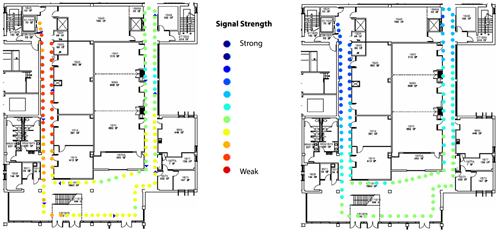News and Events
Use the filters below to narrow publications by offices, programs or categories
As computers become smaller, faster, and more affordable, they are transforming nearly every aspect of American life, giving us access to millions of digital books, songs, and movies. And machines — from phones to cars and even medical devices — are smarter, safer, and more efficient thanks to computers and the software that powers them. With these advances come important policy questions, including how best to simultaneously promote innovation and the free flow of information while protecting intellectual property.
One of the most challenging aspects of public safety communications is maintaining audio quality in the harsh noise environments in which fire fighters, police officers and other first responders operate. The National Public Safety Telecommunications Council (NPSTC), a federation of public safety organizations, has identified audio quality as a critical requirement, noting that first responders have an immediate and sometimes life-and-death need to understand exactly what is being communicated during an emergency.
Please join me in recognizing the NTIA employees who at a special ceremony this week received Department of Commerce Gold and Silver awards for their outstanding contributions.
Here are the NTIA honorees:
Gold medal award winners:
The National Telecommunications and Information Administration’s BroadbandUSA team, together with Next Century Cities, a nonprofit initiative of over 100 mayors and community officials dedicated to ensuring the availability of next-generation broadband Internet for all Americans convened a productive broadband workshop yesterday in Portland, Maine to explore ways to close the digital divide and expand broadband capacity throughout the New England region.
As President Obama observed earlier this year, “high-speed broadband is not a luxury, it’s a necessity.” So much of how we live our daily lives – from searching for a job to accessing health data – has moved online, which requires a high-speed broadband Internet connection. While there is broad consensus on the need to ensure Americans have access to broadband, figuring out how to fund it is still a major challenge for many communities.
With the closing of the public comment period, we at NTIA continue to be impressed by the dedication and hard work of the many stakeholders involved in planning the transition of NTIA’s stewardship of the Internet’s domain name system. We are pleased to see so many stakeholders participate in the crafting of the plan to transition NTIA’s role related to the DNS technical functions, known as the IANA functions. Everyone that benefits from the Internet has a stake in the success of the multistakeholder model and a voice in this process.
For our country to take full advantage of the promises of innovation, America’s path forward must ensure our people and ideas can move at the rapid pace of the 21st century. At a time when technological innovation and economic growth go hand-in-hand, our digital infrastructure is central to our competitiveness.
Ten years ago, one of the deadliest hurricanes in history struck the Gulf Coast, decimating coastal cities and communities from Gulfport, Miss., to New Orleans. At the time, the National Weather Service (NWS), an agency of the U.S. Commerce Department’s National Oceanic and Atmospheric Administration (NOAA), accurately forecasted more than two days ahead of time that the central Gulf Coast would be directly impacted by Hurricane Katrina.
The Internet’s global multistakeholder community has made tremendous progress in its work to develop a proposal to transition the historic stewardship role NTIA has played related to Internet’s domain name system (DNS).
The Institute for Telecommunication Sciences (ITS), NTIA’s research and engineering laboratory in Boulder, Colo., provides critical support to NTIA and other agencies by performing basic and applied research in radio science—which enables every wireless communications device, from smart phones, to military radars, to space satellites to operate.
Nearly 17 months ago, NTIA kicked off activities to complete the privatization of the Internet Domain Name System (DNS) as promised in 1998 by transitioning our stewardship role over certain technical functions related to the DNS.
We have reached an important milestone in that process as the two working groups tasked with developing proposals related to the transition have released them for final comment.
This post is part of our “Spotlight on NTIA” blog series, which is highlighting the work that NTIA employees are doing to advance NTIA’s mission of promoting broadband adoption, finding spectrum to meet the growing demand for wireless technologies, and ensuring the Internet remains an engine for innovation and economic growth.
In recent days, there has been a great deal of discussion about how much spectrum federal agencies use and whether that spectrum is being used efficiently. This is an important conversation to have and one that goes to the heart of NTIA’s statutory mission of fostering full and efficient use of the nation’s spectrum resources in a manner that most benefits the public interest. If we are to make progress toward a more efficient use of spectrum, it is also essential that this discussion include a full and balanced assessment of the challenges and trade-offs that must be addressed.
On Wednesday, President Obama travelled to Durant, Oklahoma, where he announced ConnectHome — a plan to bring high-speed broadband Internet to low-income housing in 27 cities and one Native American tribal community. ConnectHome is just one component of a broader Administration initiative to expand broadband and close the digital divide, and NTIA is playing a critical role in that effort.
Unmanned aircraft systems (UAS) have the potential to provide a wide range of innovative and beneficial services to businesses and consumers in the United States. From enhancing news gathering, improving agribusiness, providing new delivery models, to providing Internet in remote areas, the possibilities for UAS are staggering. Consumer trust and responsible operation are keys to fully tapping the transformative potential of unmanned aircraft.
Promoting and preserving the digital ecosystem is a core mission of the Department of Commerce, and the security and resiliency of that ecosystem is vital. For the digital economy to thrive, users must trust that their personal data and the systems and websites they use every day are as secure as possible.
Recognizing the growing importance of wireless broadband to the U.S. economy, President Obama five years ago last week set a bold new goal aimed at ensuring that enough spectrum is available to meet the surging demand for wireless connectivity.
This post is part of our “Spotlight on NTIA” blog series, which is highlighting the work that NTIA employees are doing to advance NTIA’s mission of promoting broadband adoption, finding spectrum to meet the growing demand for wireless technologies, and ensuring the Internet remains an engine for innovation and economic growth.
Today, the National Telecommunications and Information Administration (NTIA) released an important technical report developed by engineers in NTIA’s Office of Spectrum Management (OSM) and Institute for Telecommunication Sciences (ITS) that provides the technical analysis supporting spectrum sharing in the 3550-3650 MHz band. It serves as a concrete example of our efforts to make more spectrum available to meet the exploding demand for commercial wireless broadband while protecting mission-critical Federal systems.&
Next week, hundreds of members of the Internet stakeholder community will attend the Internet Corporation for Assigned Names and Numbers’ (ICANN) 53rd meeting in Argentina. As I head to Buenos Aires, one of NTIA’s top priorities continues to be the transition of NTIA’s role related to the Internet Domain Name System. Since we announced the IANA stewardship transition in March 2014, the response of the stakeholder community has been remarkable and inspiring.
This post is part of our “Spotlight on NTIA” blog series, which is highlighting the work that NTIA employees are doing to advance NTIA’s mission of promoting broadband adoption, finding spectrum to meet the growing demand for wireless technologies, and ensuring the Internet remains an engine for innovation and economic growth.
 Yesterday, I had the great opportunity to speak at the United States Telecommunications Training Institute (USTTI) to a group of foreign government officials focused on Internet and cybersecurity issues. My talk focused on how NTIA sees the role of the Internet in the U.S. economy, and what key policies have contributed to the strength of the U.S. Internet economy.
Yesterday, I had the great opportunity to speak at the United States Telecommunications Training Institute (USTTI) to a group of foreign government officials focused on Internet and cybersecurity issues. My talk focused on how NTIA sees the role of the Internet in the U.S. economy, and what key policies have contributed to the strength of the U.S. Internet economy.
As we explore a bold new world of sharing spectrum across government and commercial users, NTIA is continuing the conversation about how to make this vision a reality.

